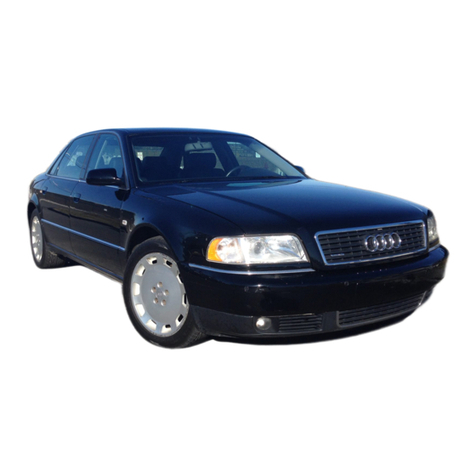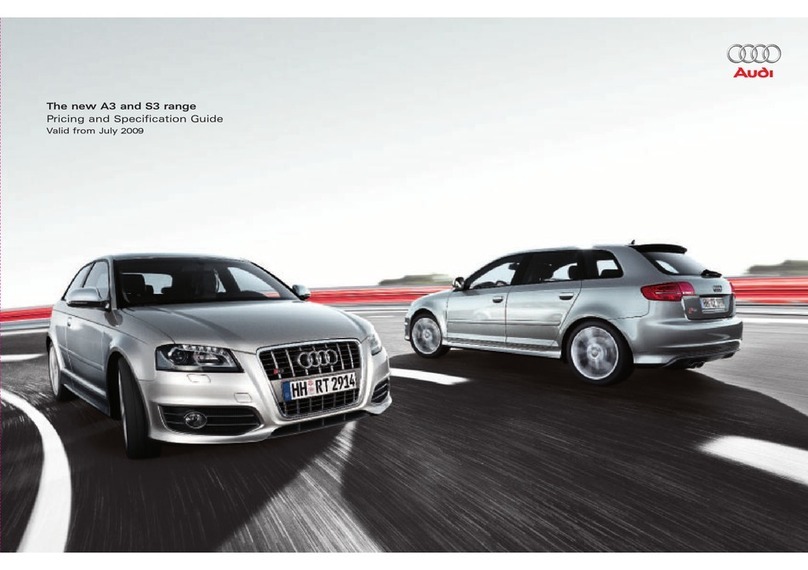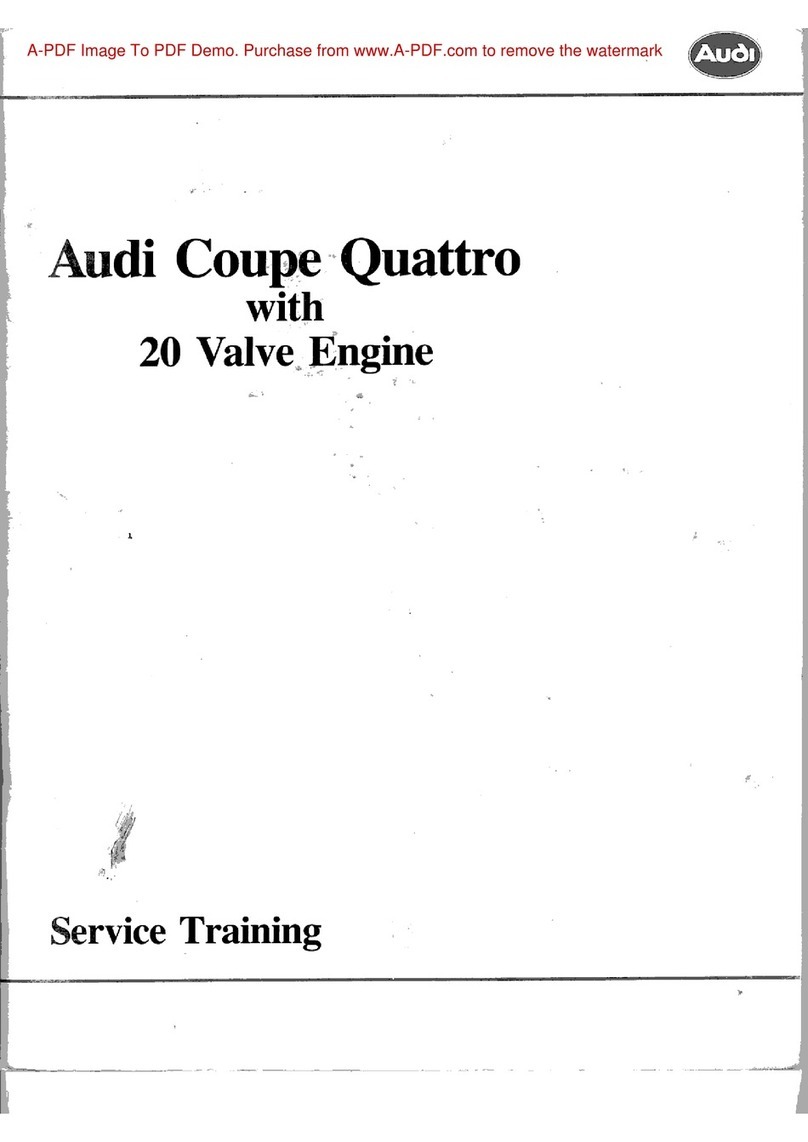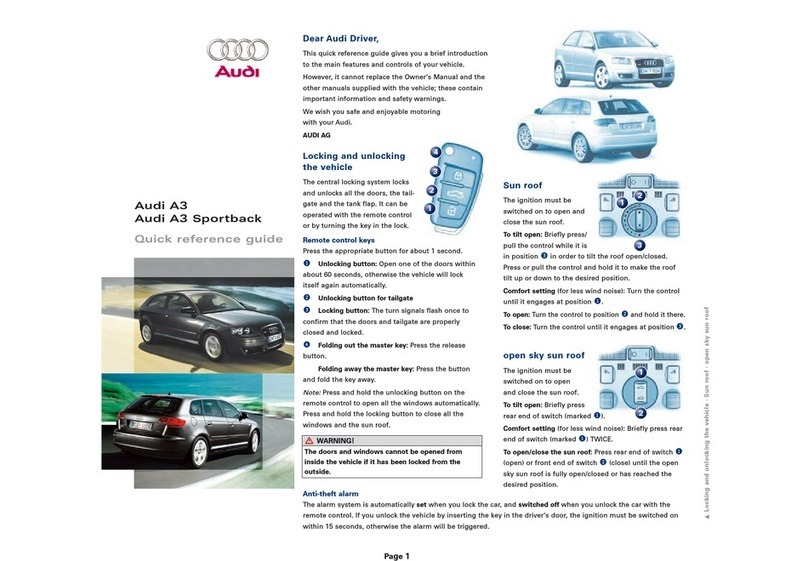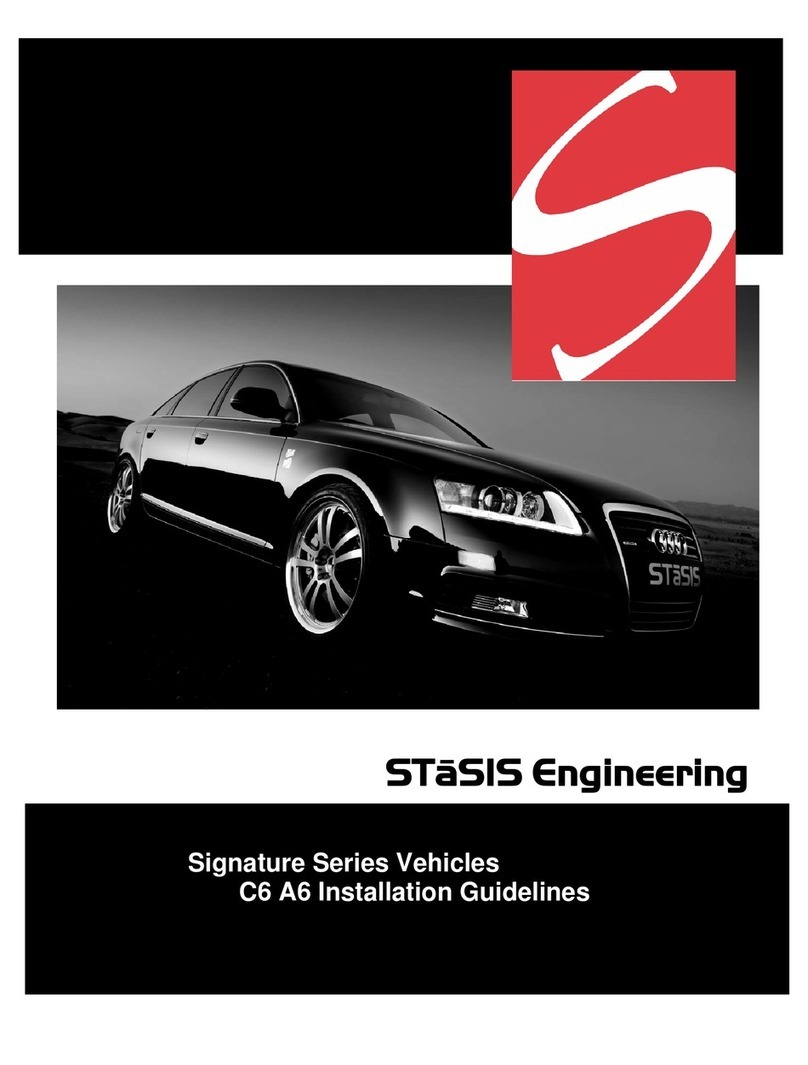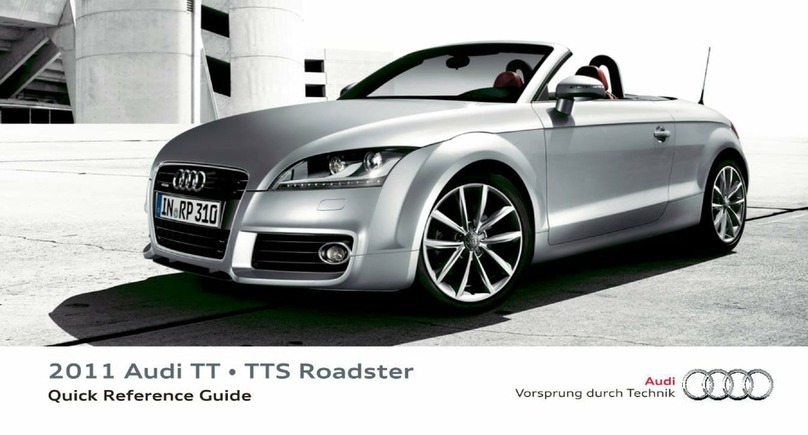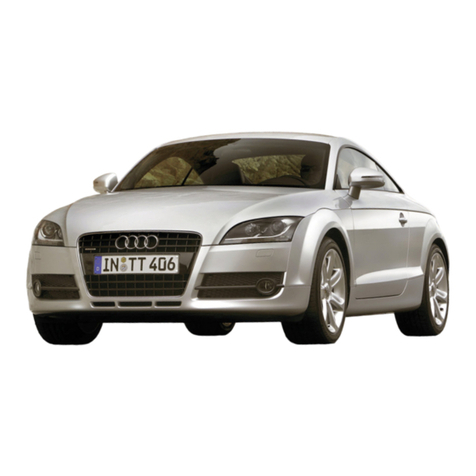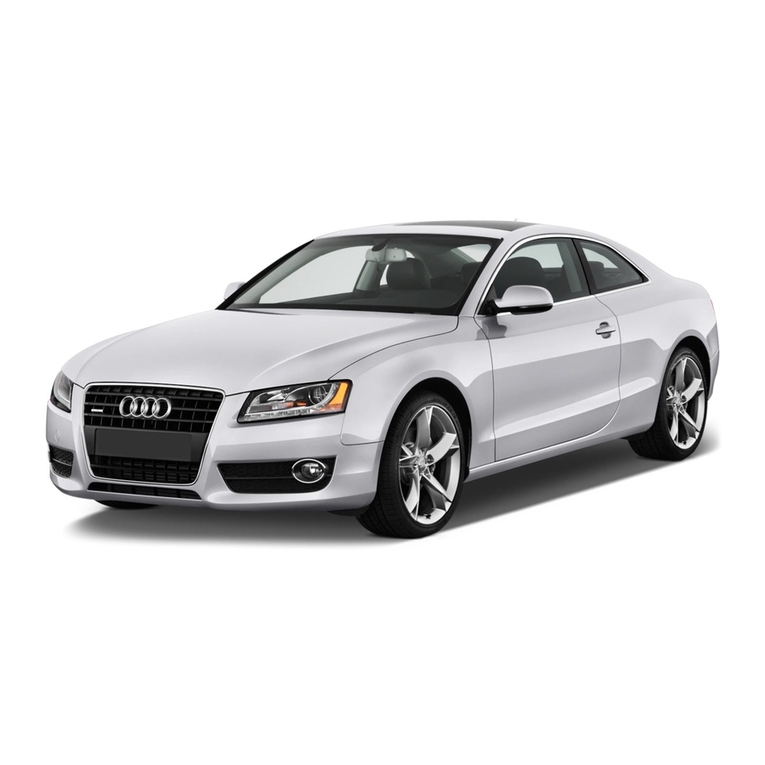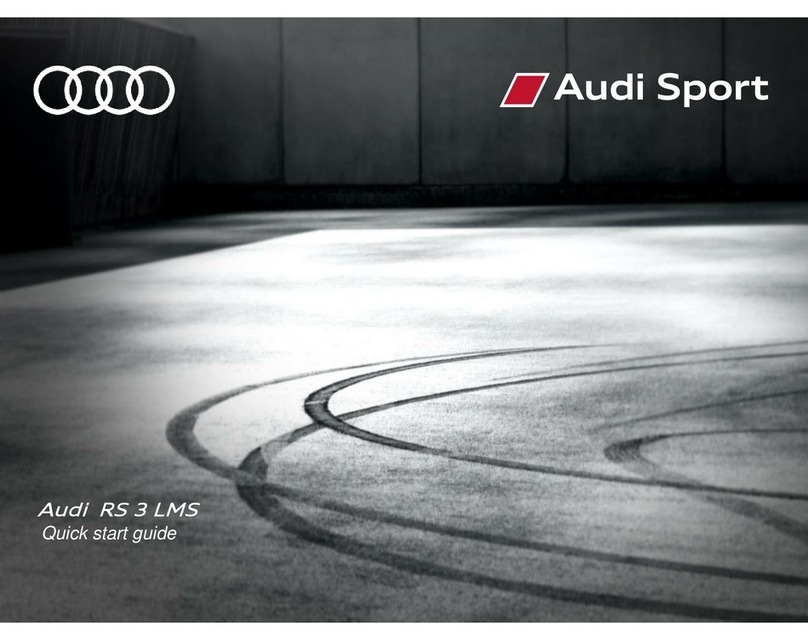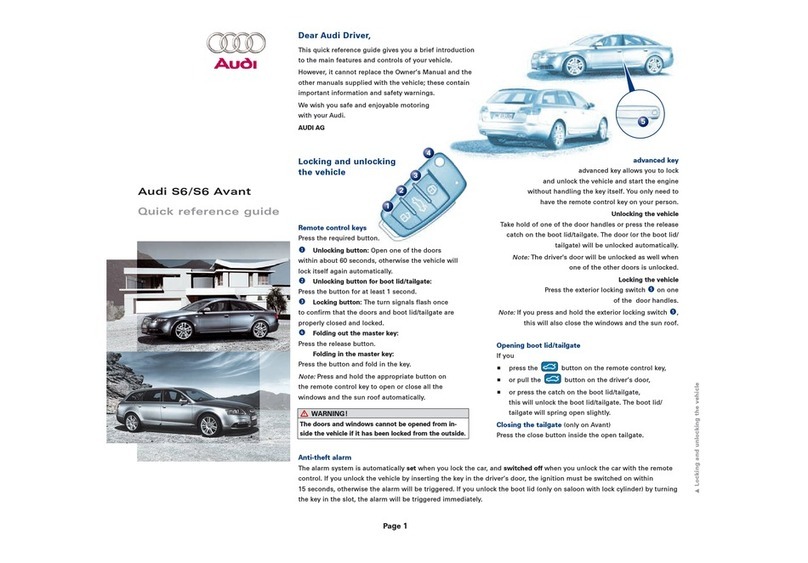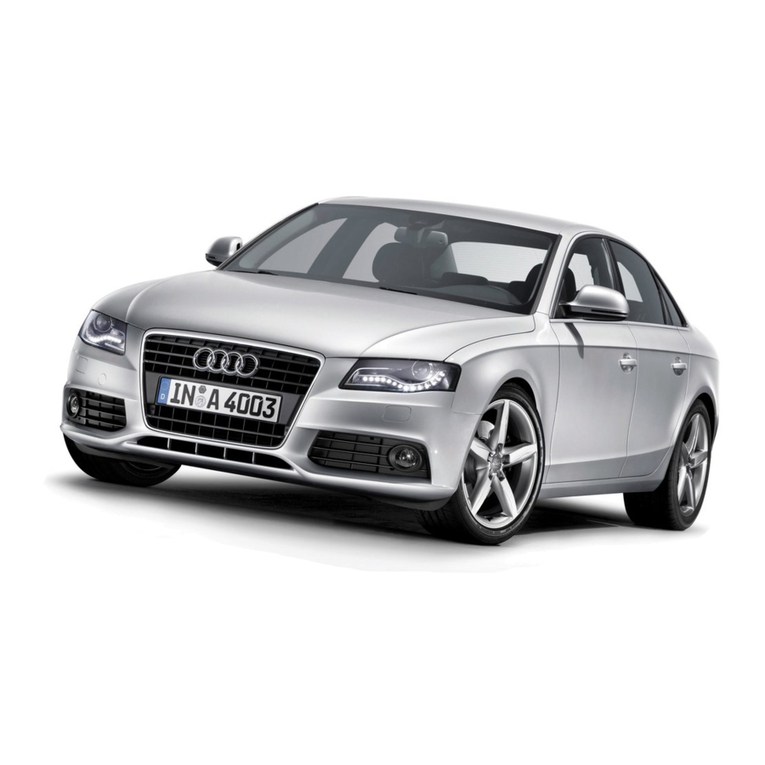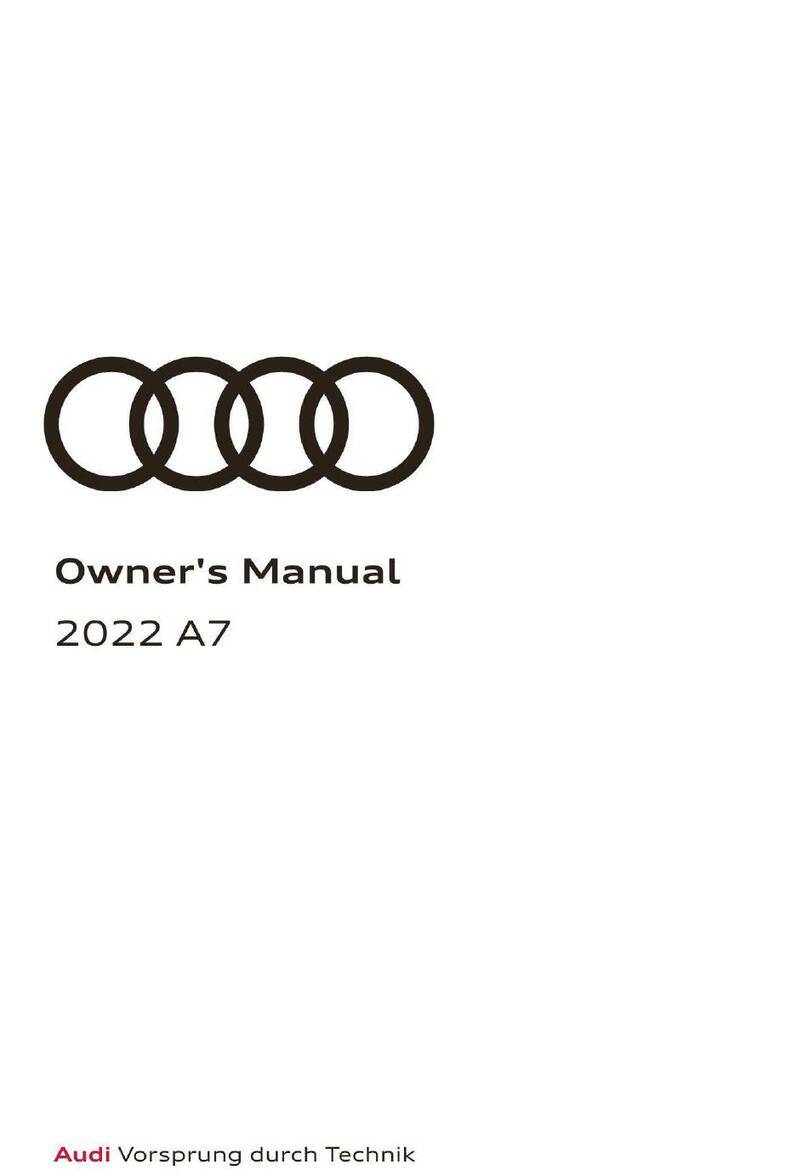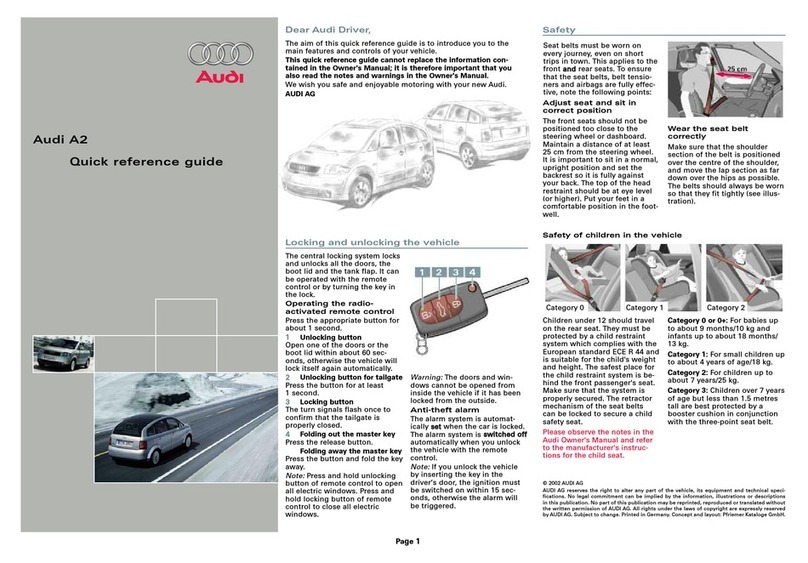
Protected by copyright. Copying for private or commercial purposes, in part or in whole, is not
permitted unless authorised by AUDI AG. AUDI AG does not guarantee or accept any liability
with respect to the correctness of information in this document. Copyright by AUDI AG.
8 Components Actuated by A/C System, Electrical Test . . . . . . . . . . . . . . . . . . . . . . . . . . . . 80
8.1 General Information . . . . . . . . . . . . . . . . . . . . . . . . . . . . . . . . . . . . . . . . . . . . . . . . . . . . . . 80
8.2 Rear Window Defogger Z1 , Checking . . . . . . . . . . . . . . . . . . . . . . . . . . . . . . . . . . . . . . . . 80
8.3 Heated Seats and Seat Ventilation, Checking . . . . . . . . . . . . . . . . . . . . . . . . . . . . . . . . . . 81
8.4 Auxiliary Heater Heating Element Z35 , Checking . . . . . . . . . . . . . . . . . . . . . . . . . . . . . . . . 85
8.5 Testing the Fuel-Driven Auxiliary Heater . . . . . . . . . . . . . . . . . . . . . . . . . . . . . . . . . . . . . . 90
9 A/C System Control Components Inside Passenger Compartment . . . . . . . . . . . . . . . . . . 92
9.1 General Information . . . . . . . . . . . . . . . . . . . . . . . . . . . . . . . . . . . . . . . . . . . . . . . . . . . . . . 94
9.2 Front A/C System Components in Passenger Compartment (Illustration of Left Side) . . . . 96
9.3 Sunlight Photo Sensor G107 , Removing and Installing . . . . . . . . . . . . . . . . . . . . . . . . . . 103
9.4 Interior Temperature Sensor Fan V42 , Removing and Installing . . . . . . . . . . . . . . . . . . . . 104
9.5 Climatronic Control Module J255 Front A/C Control Head Information, Removing and
Installing . . . . . . . . . . . . . . . . . . . . . . . . . . . . . . . . . . . . . . . . . . . . . . . . . . . . . . . . . . . . . . . . 105
9.6 Left Footwell Vent Temperature Sensor G261 , Removing and Installing . . . . . . . . . . . . 111
9.7 Left Footwell Door Motor V108 , Removing and Installing, “Comfort” Version . . . . . . . . . . 112
9.8 Left Temperature Door Motor V158 , Removing and Installing, “Comfort” Version . . . . . . 113
9.9 Retaining plate with Left Footwell Door Motor V108 and Left Temperature Door Motor V158 ,
Removing and Installing . . . . . . . . . . . . . . . . . . . . . . . . . . . . . . . . . . . . . . . . . . . . . . . . . . . . 114
9.10 Left Heater Core Covers, Removing and Installing, Front A/C Unit Installed . . . . . . . . . . . . 117
9.11 Preparing Adapter Cables for Control Motor Actuation . . . . . . . . . . . . . . . . . . . . . . . . . . . . 117
9.12 Defroster Door Motor V107 , Removing and Installing . . . . . . . . . . . . . . . . . . . . . . . . . . . . 118
9.13 Left Center Vent Motor V110 , Removing and Installing, “Comfort” Version Only . . . . . . 121
9.14 Left Side Vent Motor V299 , Removing and Installing . . . . . . . . . . . . . . . . . . . . . . . . . . . . 125
9.15 Retaining plate with Defroster Door Motor V107 , Left Side Vent Motor V299 (and Left Center
Vent Motor V110 ), Removing and Installing . . . . . . . . . . . . . . . . . . . . . . . . . . . . . . . . . . . . 128
9.16 Left Front Upper Body Vent Temperature Sensor G385 , Removing and Installing . . . . . . 131
9.17 Indirect Ventilation Door Motor V213 , Removing and Installing . . . . . . . . . . . . . . . . . . . . 132
9.18 Front Heater Core, Removing and Installing, A/C Unit Installed . . . . . . . . . . . . . . . . . . . . 134
9.19 Auxiliary Heater Heating Element Z35 , Removing and Installing . . . . . . . . . . . . . . . . . . . . 140
9.20 Front A/C System Components in Passenger Compartment (Illustration of Right Side) . . 144
9.21 Right Temperature Door Motor V159 (or Left Temperature Door Motor V158 ), Removing and
Installing . . . . . . . . . . . . . . . . . . . . . . . . . . . . . . . . . . . . . . . . . . . . . . . . . . . . . . . . . . . . . . . . 151
9.22 Right Footwell Door Motor V109 (or Left Footwell Door Motor V108 ), Removing and
Installing . . . . . . . . . . . . . . . . . . . . . . . . . . . . . . . . . . . . . . . . . . . . . . . . . . . . . . . . . . . . . . . . 152
9.23 Retaining Plate with Control Motors V158 ( V159 ) and V109 ( V108 ), Removing and
Installing . . . . . . . . . . . . . . . . . . . . . . . . . . . . . . . . . . . . . . . . . . . . . . . . . . . . . . . . . . . . . . . . 153
9.24 Right Heater Core Covers, Removing and Installing, Front A/C Unit Installed . . . . . . . . . . 156
9.25 Right Center Vent Motor V111 , Removing and Installing . . . . . . . . . . . . . . . . . . . . . . . . . . 156
9.26 Right Side Vent Motor V300 , Removing and Installing . . . . . . . . . . . . . . . . . . . . . . . . . . . . 157
9.27 Retaining Plate with Control Motors V111 and V300 , Removing and Installing . . . . . . . . 158
9.28 Right Front Upper Body Vent Temperature Sensor G386 , Removing and Installing . . . . 161
9.29 Evaporator Vent Temperature Sensor G263 , Removing and Installing . . . . . . . . . . . . . . 162
9.30 Fresh Air Blower V2 , Removing and Installing . . . . . . . . . . . . . . . . . . . . . . . . . . . . . . . . . . 163
9.31 Fresh Air Blower Control Module J126 , Removing and Installing . . . . . . . . . . . . . . . . . . . . 164
9.32 Recirculation Door Motor V113 , Removing and Installing . . . . . . . . . . . . . . . . . . . . . . . . . . 166
9.33 Fresh Air Intake Duct Temperature Sensor G89 , Removing and Installing . . . . . . . . . . . . 167
9.34 Right Footwell Vent Temperature Sensor G262 , Removing and Installing . . . . . . . . . . . . 168
9.35 Dust and Pollen Filter, Removing and Installing . . . . . . . . . . . . . . . . . . . . . . . . . . . . . . . . . . 169
9.36 Dust and Pollen Filter with Activated Charcoal Filter Unit . . . . . . . . . . . . . . . . . . . . . . . . . . 170
9.37 Front Condensation Water Drain Hose, Checking, Removing and Installing . . . . . . . . . . . . 171
9.38 Rear A/C System Components . . . . . . . . . . . . . . . . . . . . . . . . . . . . . . . . . . . . . . . . . . . . . . 176
9.39 Rear A/C Unit, Bringing into Service Position . . . . . . . . . . . . . . . . . . . . . . . . . . . . . . . . . . 180
9.40 Heater Core, Removing and Installing, Rear A/C Unit Installed . . . . . . . . . . . . . . . . . . . . . . 182
9.41 Rear Fresh Air Blower V80 , Removing and Installing . . . . . . . . . . . . . . . . . . . . . . . . . . . . 184
9.42 Rear Fresh Air Blower Control Module J391 , Removing and Installing . . . . . . . . . . . . . . 185
9.43 Right Rear Temperature Door Motor V314 , Removing and Installing . . . . . . . . . . . . . . . . 186
9.44 Right Rear Air Door Motor V240 , Removing and Installing . . . . . . . . . . . . . . . . . . . . . . . . 186
Audi Q7 2007 ➤
Heating, Ventilation and Air Conditioning - Edition 04.2013
ii Contents
